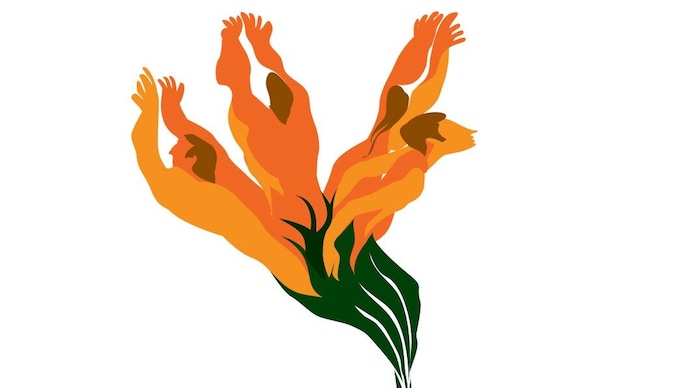Disunited we stand
Author Pico Iyer says India is too huge to be typecast and unity is the last refuge of those terrified of difference

 (NOTE: The article was published in the INDIA TODAY edition dated August 20, 2007)
(NOTE: The article was published in the INDIA TODAY edition dated August 20, 2007)
Ten years ago, many Indians and foreigners were busily laying down principles for Indian writing in English, or hatching theories about it. It was, at least to Western eyes, exotic in its material, larger-than-life, full of events that strained the traditional boundaries of straight realism. It trafficked in the mythical patterns, the gods that are a daily feature of much of Indian life, even as it read, often, like the product of an arranged marriage between Charles Dickens and Jane Austen. At the very least, it was decidedly different from the literature of London or New York. Indian writing in English was already decades-old at that point, and India was 50 years away from its colonial past. But “Indian writing” seemed rare enough and strange enough to be confined within a literary ghetto.
No more. What does Salman Rushdie have in common with Rohinton Mistry (and what did they have in common, deep down, even then)? What can you say about Jhumpa Lahiri that could possibly apply to Kiran Desai (other than that both write about family and the complications of belonging, akin to saying that both have two eyes and two ears)? Would you even include Jhumpa Lahiri in the category of Indian writing, given that she has spent so little time in India and sets nearly all her stories on the East Coast of America? To what extent, indeed, does Indian writing have to deal with India at all (were it not for the author’s name and photograph, there is not a word in Vikram Seth’s An Equal Music that would suggest an Indian origin)?
In desperation, category-makers and theorists began extending the grouping to what was called South Asian writing, or “sub-altern” fiction or even post-colonial prose, so that it could take in Mohsin Hamid and Michael Ondaatje and at least half of Hanif Kureishi. But does it therefore extend to V.S. Naipaul (who seems as much a foreigner in India as any Englishman might)? And what does it do with Abraham Verghese, 100% Indian in ancestry, but born and raised in Ethiopia and writing in the indelible, immaculate cadences of Iowa? If Indian writing is “post-colonial,” would you ascribe to it the characteristics you find in Derek Walcott, in Ben Okri, in Peter Carey?
I use writing here only as a handy example of a much larger truth: India is, and always has been, much too huge, too various, too human for any rules really to apply to it. “If you succumbed to India’s vivid temptation to generalise,” Paul Theroux writes in his forthcoming, memorable set of Indian novellas, The Elephanta Suite, “all you could do was utter a platitude so obvious it looked like a lie” (impenitent as ever, Theroux goes on, one page later, to throw off many more provocative generalities about India, if only because everyone else does). The only worthwhile thing you can say about both Ladakh and Kerala is that both have temples, perhaps, and tea, as almost every traditional culture does. The one thing that truly links every Indian today is a knowledge, firsthand and constant, of diversity.
The mind, I think, hungers for the convenience and safety of categories, ways of trying to tame the swarm of particulars; and certainly, there are some broad characteristics you would expect to find in China more than in India, and vice versa. But if independence means anything, it is that India is, and ought to be, less uniform, more contradictory, more wildly and uncategorisably itself now than it ever was when Britain tried to push it into straight lines and parentheses. Freedom will never lend itself to the one-size-fits-all simplifications that subjugation does.
Think again of writing, as a compressed model—and reflection—of Indian life today. You might argue that there is a growing school of Bombay writing in the English-language novel, but when the city is seen by the global Muslim Rushdie, the Toronto Parsi Mistry, the expat Hindu Manil Suri and the American Catholic Paul Theroux, it takes on different colours and cadences with everyone. And when you take in writing all of India’s many other languages, the cacophony becomes even harder to squeeze into a closet. Britain is less than a twentieth the size of India, in terms of population, yet we do not expect to find very much in common between Martin Amis, Kazuo Ishiguro, Anita Brookner and Zadie Smith. It is really a form of racism to say that Amitav Ghosh has anything in common with Bapsi Sidhwa, just because they both happen to have darker skins than John Updike. E Pluribus Unum has never been, and never should be, featured on the back of a ten-rupee note.
To categorise oneself is in some ways to stereotype oneself, and to impose upon oneself a home-made colonialism. When I read the thrillers, the girl-meets-girl confessionals, the police procedurals and the social comedies that flood out of India today, I can’t begin to say that they share any obvious characteristics at all. Indian writing—Indian life—is as diverse, as unruly, as hostile to simple labels as each of its 1.2 billion individuals ought to be. Unity (as contemporary America sometimes shows us) is the last refuge of those who are terrified of difference.
(The article was published in the INDIA TODAY edition dated August 20, 2007)
Subscribe to India Today Magazine

